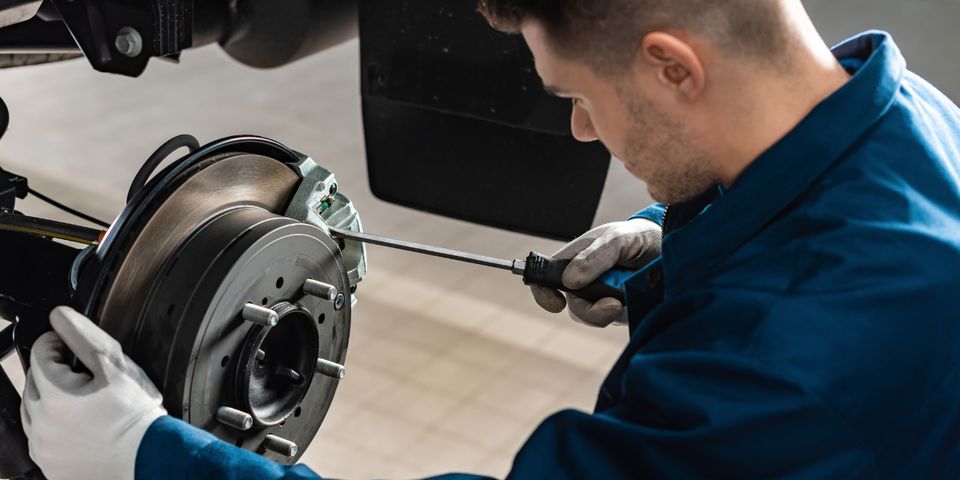
Brake pads are vital to safe driving. They’re designed to create friction and gradually bring the wheels to a stop whenever you press on the brake pedal. These pads will eventually wear down over time, so it's important to understand the early signs of a problem and how they'll affect the rest of the braking system. Here’s everything you need to know about how they work and when to replace them.
How Brake Pads Work

The brakes consist of flat steel pieces and pads made of semi-metallic, organic, or ceramic compounds bound with resin. Semi-metallic pads usually contain metal shavings mixed with graphite, and organic pads usually contain a mix of glass, rubber, and Kevlar. Ceramic pads typically have metallic shavings mixed in for heat resistance and stability.
The thickened side of the pad designed to produce friction whenever it contacts the brake disc. Pushing down on the pedal to stop the car begins the cycle of applying force. The car responds to the pressure by pressing a piston into the master cylinder, which contains brake fluid. That action creates pressure that pushes the fluid out of the cylinder into the brake lines.
These lines are affixed to the wheel cylinder and calipers. Attached to the calipers are the brake pads, which sit snugly against the rotors, the heavy-duty metal discs that spin along with your wheels. When the lines put pressure on the wheel cylinder and calipers, the pads grasp the rotors and produce the friction that forces the wheels to stop turning.
When to Replace Them
The rule of thumb is to replace the pads every 50,000 miles or so because they wear down over time, but this timeframe depends on how much you drive and what type of driving you do.
If you hear a screaming noise when you press the pedal, the pads have likely thinned down and are scraping the rotors. Sometimes, worn pads cause the steering wheel to shake because they can’t properly grip the rotors. This results in a misaligned braking system, which, in turn, causes the steering wheel to quiver. A warning light may also appear on the dashboard to alert you when the sensor detects that the pads are too thin.
If you're looking for brake pad replacements, turn to F.A.T.S. Parts in Anchorage, AK. Serving the community since 1984, the locally owned and operated company carries an extensive range of high-quality parts and accessories to ensure your safety on the road. They also offer on-site auto repairs. Visit the website for more information about these services. You can also call (907) 561-4721 to speak to someone in the parts department.
About the Business
Have a question? Ask the experts!
Send your question

